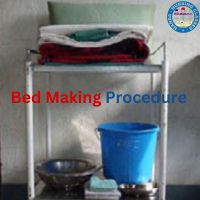Introduction
Intravenous (IV) injection is a common procedure in nursing that involves administering medications, fluids, or blood products directly into the patient’s bloodstream. This method ensures rapid absorption and an immediate therapeutic effect. This article aims to provide nursing students with a comprehensive guide on IV injections, including its definition, purpose, indications, contraindications, advantages, disadvantages, equipment, procedure, injection site, technique, guidelines, nursing responsibilities, and a concluding note.
Intravenous injection guide Step-by-step IV injection procedure IV medication administration Nursing IV injection protocol Intravenous catheter placement IV therapy procedure IV infusion technique IV medication delivery IV injection safety Intravenous drug administration
Let us know full information about Intravenous injection procedures in nursing
Intravenous Injection Definition
Intravenous injection, also known as IV injection, is a procedure that involves the introduction of a solution or medication directly into a patient’s vein using a sterile needle and syringe or an IV catheter. This route of administration allows for rapid and complete absorption of the medication into the bloodstream.

Intravenous Injection Purpose
The purpose of IV injection is to provide immediate and accurate delivery of medications or fluids to achieve the desired therapeutic effect. IV injections are commonly used for administering antibiotics, analgesics, chemotherapy drugs, blood products, and emergency resuscitation fluids.
Intravenous Injection Indications
IV injections are indicated in various situations, including:
Emergency situations requiring rapid medication administration.
Administration of medications with irritating or poorly absorbed properties.
Patients unable to take medications orally or through other routes.
Fluid and electrolyte replacement.
Blood transfusions or intravenous nutrition.
Intravenous Injection Contraindications
While IV injections are generally safe and effective, there are certain contraindications that should be considered, such as:
Known allergies or hypersensitivity to the medication being administered.
Incompatibility between medications and IV fluids.
Damaged or sclerosed veins that may impede proper administration.
Local infection or inflammation at the injection site.
Intravenous Injection Advantages and Disadvantages
Advantages of IV injections include:
Rapid onset of action: Medications are quickly delivered directly into the bloodstream.
Accurate dosage: IV injections allow for precise medication dosage.
Continuous administration: IV infusion pumps can provide a continuous, controlled delivery.
Titration of medication: Doses can be adjusted easily based on the patient’s response.
Disadvantages of IV injections include:
Invasive procedure: Requires the insertion of a needle or catheter into a vein.
Risk of infection: Improper aseptic technique may lead to infection.
Vein damage: Repeated IV injections can damage veins, leading to sclerosis or thrombosis.
Allergic reactions: Some medications may cause allergic or adverse reactions.
Intravenous Injection Procedure Equipment
The following equipment is required for an IV injection:
Sterile needle or IV catheter.
Syringe or IV infusion pump.
Sterile gloves.
Antiseptic solution (e.g., alcohol swab).
Sterile gauze or adhesive dressing.
IV tubing (if using an infusion pump).
Medication or IV fluid prescribed.
Intravenous Injection Procedure
Perform hand hygiene and put on sterile gloves.
Explain the procedure to the patient, ensuring their consent.
Select an appropriate vein for IV access (common sites include the forearm, hand, or antecubital fossa).
Cleanse the selected site with an antiseptic solution using a circular motion, starting from the center and moving outward.
Allow the antiseptic solution to dry completely.
Prepare the medication or IV fluid as per the prescribed dosage.
Attach the needle or IV catheter to the syringe or IV tubing.
Apply a tourniquet proximal to the selected injection site to make the veins more prominent.
Ask the patient to make a fist or pump their hand to engorge the veins.
Hold the needle or catheter with a steady hand and insert it into the vein at a 15 to 30-degree angle.
Observe for blood flashback in the needle or catheter to confirm proper placement.
Stabilize the needle or catheter and remove the tourniquet.
Attach the syringe or IV tubing and slowly administer the medication or IV fluid.
Monitor the patient for any adverse reactions during the injection.
Once the medication or infusion is complete, remove the needle or catheter swiftly and apply pressure to the site with sterile gauze.
Secure the site with a sterile adhesive dressing.
Dispose of all used equipment appropriately and document the procedure in the patient’s medical record.
Intravenous Injection Site
Common sites for IV injections include the veins in the forearm (e.g., cephalic, basilic) and hand (e.g., dorsal metacarpal veins). The antecubital fossa is also frequently used due to the larger veins available.
Intravenous Injection Contraindications
Contraindications for IV injections include known allergies or hypersensitivity to the medication, incompatibility between medications and IV fluids, damaged veins, or local infection/inflammation at the injection site.
Intravenous Injection Technique
The key techniques for a successful IV injection include proper site preparation, careful needle insertion, confirmation of proper placement, slow and controlled medication administration, and appropriate post-procedure care.
Intravenous Injection Guidelines
To ensure patient safety and maximize the efficacy of IV injections, follow these guidelines:
Adhere to the aseptic technique throughout the procedure.
Verify the patient’s identity and confirm the prescribed medication or fluid.
Double-check the dosage and compatibility of the medication with IV fluids, if applicable.
Monitor the patient closely for any adverse reactions during and after the injection.
Document the procedure accurately in the patient’s medical record, including the medication administered, dosage, site, and any complications or patient response.
Intravenous Injection Procedure Nursing Responsibilities
Nursing responsibilities related to IV injections include:
Assessing the patient’s condition and determining the need for an IV injection.
Explaining the procedure to the patient and obtaining informed consent.
Ensuring patient safety and comfort during the procedure.
Monitoring vital signs and assessing for any adverse reactions.
Educating the patient about the purpose of the medication or IV fluid, potential side effects, and signs of complications.
Maintaining accurate documentation of the procedure and the patient’s response.
Must Read – 👇
👉 Oral Medication Administration 👈
👉 Topical Application Administration👈
👉Intradermal injection procedure👈
👉Subcutaneous injection procedure👈
👉Intramuscular injection procedure👈
👉Intravenous injection procedure👈
Conclusion
Intravenous injection is a vital procedure in nursing that allows for rapid and accurate administration of medications and fluids. By following proper techniques and guidelines, nursing students can ensure patient safety and optimize the therapeutic outcomes of IV injections.
Remember to consider contraindications, adhere to the aseptic technique, monitor the patient closely, and provide comprehensive care throughout the process.
FAQs
What is an intravenous injection?
An intravenous (IV) injection is a medical procedure where medication or fluids are delivered directly into a vein using a needle and syringe.
Why are intravenous injections used?
IV injections are used to deliver medications, fluids, blood products, or nutrients directly into the bloodstream for rapid absorption and distribution throughout the body.
How is an intravenous injection performed?
The procedure involves inserting a sterile needle into a vein, usually in the arm or hand, and then connecting it to a tube or catheter that delivers the medication or fluid.
Is an intravenous injection painful?
The initial needle insertion may cause discomfort or a brief pinching sensation, but it is generally well-tolerated by most people.
Are there any risks associated with intravenous injections?
While IV injections are generally safe when performed by trained medical professionals, there are potential risks such as infection, bleeding, bruising, or vein irritation.
How long does an intravenous injection take?
The duration of the procedure can vary depending on the type and amount of medication or fluid being administered. In some cases, an IV injection may take only a few minutes, while others may require continuous infusion over several hours.
What should I expect during an intravenous injection?
Before the procedure, a healthcare provider will clean the injection site, apply a tourniquet to make the veins more visible, insert the needle, and secure it in place with tape. You may feel a slight sting or pressure during the insertion, but it should not be overly painful.
Can anyone perform an intravenous injection?
Intravenous injections should only be performed by trained medical professionals, such as nurses, doctors, or paramedics, who have the necessary skills and knowledge to safely administer medications and fluids via IV.
How do I care for the injection site after receiving an intravenous injection?
After the procedure, it’s essential to keep the injection site clean and dry to prevent infection. You may experience some minor soreness or bruising, which should resolve on its own within a few days.
What should I do if I experience any complications after an intravenous injection?
If you notice signs of infection (such as redness, swelling, or increased pain at the injection site), bleeding, or other concerning symptoms, contact your healthcare provider immediately for further evaluation and treatment.



